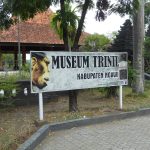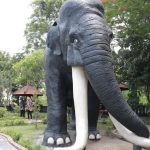Trinil
Archeology
Trinil
Trinil is a paleoanthropological site in Indonesia which is slightly smaller than the Sangiran site. This place is located in Kawu Village, Kedunggalar District, Ngawi, approximately 13 km before the City of Ngawi from the direction of the city of Solo. Trinil is an area in the Bengawan Solo valley which became the habitat of ancient life, to be precise during the Middle Pleistocene era, about one million years ago.
In 1891 Eugène Dubois, who is an anatomist, found the first ancient human remains outside Europe (at that time), namely the Javanese human specimen. In 1893 Dubois discovered early human fossils Pithecanthropus erectus as well as various fossils of ancient animals and plants.
Currently, there is a museum in Trinil which occupies an area of three hectares, with collections including fossil skulls of Pithecantrophus erectus, fossils of the lower jaw bones of ancient tigers (Felis tigris), fossils of ivory and upper molars of ancient elephants (Stegodon trigonocephalus), and fossils of horns. ancient bull (Bibos palaeosondaicus). This site was built on the initiative of Prof. Teuku Jacob, a physical anthropologist from Gadjah Mada University




















Trinil
Archeology
